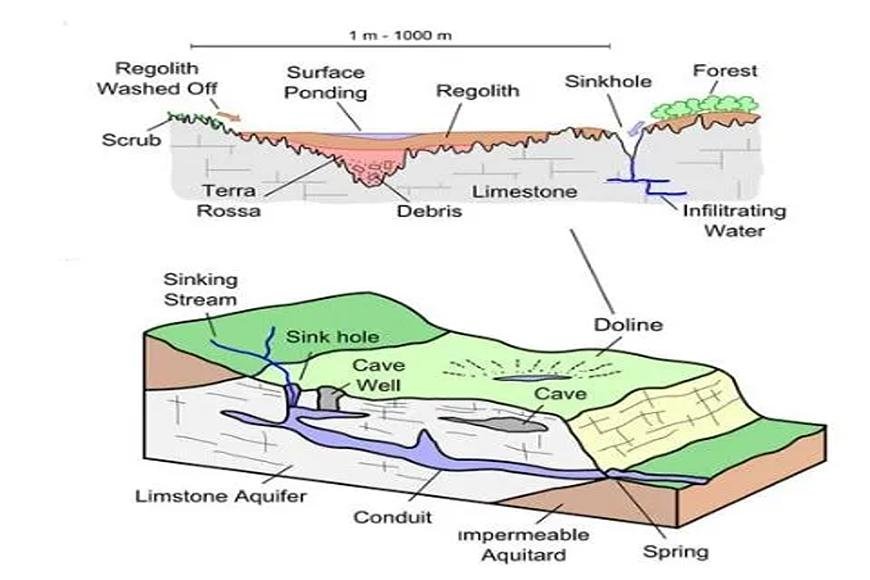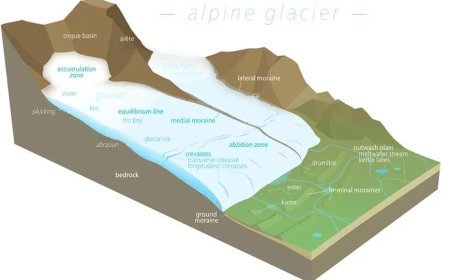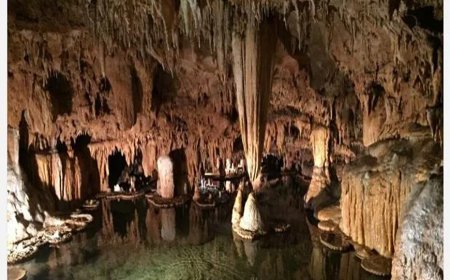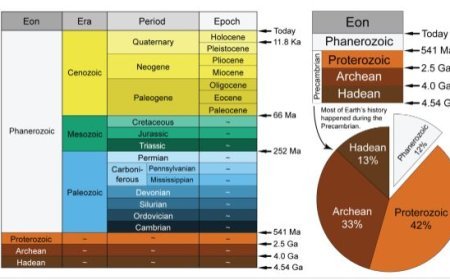THE GROUNDWATER ACT AS A GEOMORPHOLOGICAL AGENT
Groundwater shapes landscapes through dissolving rock and creating caves.

THE GROUNDWATER ACT AS A GEOMORPHOLOGICAL AGENT
- Underground water is the water that seeps through the ground.
- Rainwater picks up carbon dioxide (CO2) when it rains.
- Adding CO2 to water makes carbonic acid (CO2 + H2O ⇌ H2CO3).
- The slightly acidic water seeps into the ground and moves through cracks, holes, and pores in the soil.
- There are two types of structures that are made when water works on limestone below the surface.
- Surface traits of the land, like sinkholes and swallow holes.
- Caves, stalactites, and stalagmites are examples of underground landscape features.
Groundwater-Eroded Landforms
Sinkholes
- If you live in a limestone or chalk region and the ground sinks, you have a pit. The opening at the top is round or funnel-shaped, and the opening at the bottom is also funnel-shaped.
- These holes appear where limestone is more likely to dissolve or where an underground cover close to the surface has fallen.
- They are made when rainwater continuously dissolves rocks in these areas, making cracks wider.
- A solution sink is a pit that forms only through the process of solution.
- Some sinkholes are steep-sided holes that were dug and are filled with dirt that washed down from nearby hills.
Hole for Swallows
- In limestone areas, surface streams often enter sinkholes through swallow holes and then disappear underground through these openings, which are related to the caves below.
- They are shaped like cylinders and are found at a depth below the sinkholes. Here are a few examples of sinkholes or swallow holes:
Blackhole: Seawater
Blue Hole: Deep underwater
Cenotes, Belize (British Honduras)
Sotanos, Mexico
Tomo, New Zealand
Doline
- In areas with karst, a doline is a closed hollow that drains into the ground. It can be shaped like a cylinder, a cone, a bowl, or a dish.
- It can be anywhere from a few metres to hundreds of metres across.
- The word "Doline" comes from the Slovenian word "Dolina," which means "valley."
Karst Window/Fenster
- A Karst Fenster is a geological feature made when carbonate bedrock dissolves.
- A spring rises from this feature, and the water flows into a sinkhole.
- A Karst Fenster forms when parts of a subterranean stream's roof cave in, letting some of the subsurface streams reach the surface.
- A Karst window forms when many nearby sinkholes collapse and create a wide, open space.
Lappies/Karren
- There are bumps and lines called lappies that show up on limestone after the solution process has taken off most of its surface.
- Small solution holes, grooves, and runnels, which are all grouped together as Karren, are the most common surface karst features.
Uvala
- Uvalas are karst depressions that are much bigger than sinkholes and have smoother slopes and more interesting three-dimensional forms.
- A complex sinkhole is made up of several smaller sinkholes that join together.
- A single uvala usually has more than one sinkhole in it.
Polje
- The Polje valley is long and narrow, and the bottom is flat. There are also steep rocks on either side. It happened when a lot of sinkholes came together.
- These areas are about 250 square kilometres in size and may have "disappearing streams."
- The majority of these valleys have steep walls that are 50 to 100 metres high, hence the name "blind valley."
Caves
- Most cave streams come out of a hole in the wall of the cave.
- Tunnels are caves that have holes on both ends.
- The process of dissolving creates a unique landform called karst, which is made up of sinkholes and underground drains.
- Caves often form in places where rocks like shales, sandstones, and quartzites are layered on top of each other and limestones or dolomites are in between, or where the limestones are dense, massive, and form thick beds.
- Calcium carbonate formations like flowstones, stalactites, stalagmites, helictites, soda straws, and columns are common in limestone caves.
Changes in landforms caused by groundwater
Curtains/Drapes
- A long crack in the roof of a cave lets rainwater drip down, making a continuous strip of calcites.
- The many dripstones in the shape of needles that hang from the cave roof are known as drapes or curtains.
Stalactite
- Water drops with dissolved limestone flow down through cracks in the cave roof.
- The water drops release carbon dioxide and leave behind calcite.
- Over time, limestone layers build up and hang from the cave's roof in the form of pillars.
- A stalactite is a rock formation where the base is wider than the free end of a hanging stalactite.
- A helictite is a stalactite that extends to the sides.
Stalagmite
- A stalagmite is a formation of calcite icicles that rise from the cave floor.
- A stalagmite is a formation of calcium carbonate deposits that hang from the roof like icicles.
- A stalagmite is a formation of calcium carbonate deposits that rise from the ground.
- Halagmites are those that grow from stalagmites and go across or across from them.
Pillar
- A pillar is made when a stalagmite and an icicle join together.
- The pillar's width can be different.
What's Your Reaction?



































